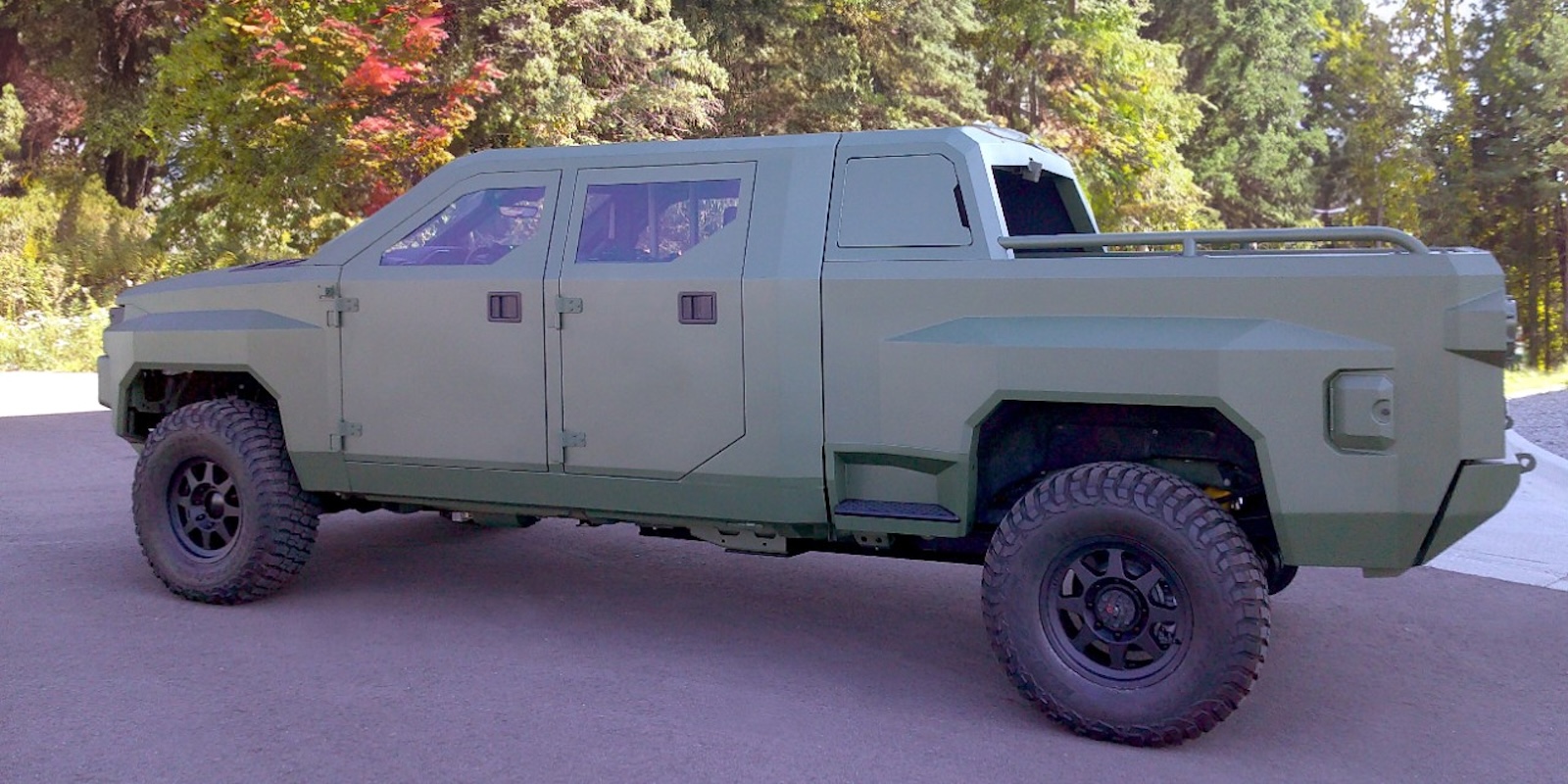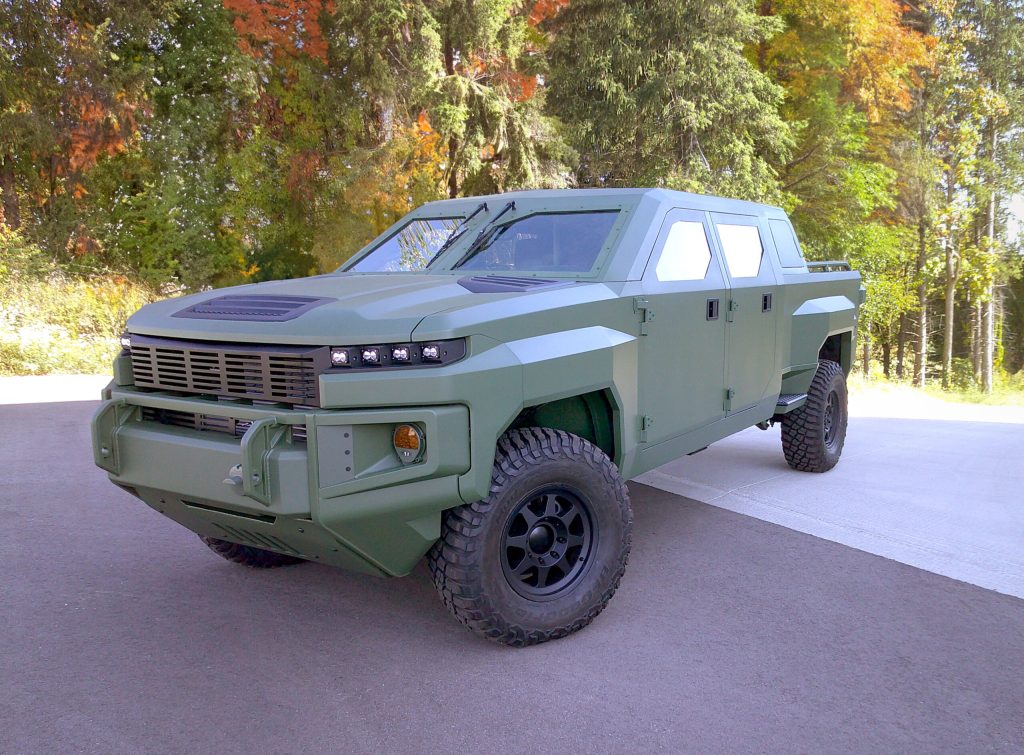
GM rolled out its new “Next Gen” tactical vehicle prototype at the AUSA conference this week packing electric drive motors at the front and rear axles that enable Silent Drive and Silent Watch technologies to make the trucks harder to detect on the battlefield.
Based on the off-road focused Chevrolet Silverado 2500HD ZR2 pickup frame, the GM Defense version pairs GM’s 2.8L Duramax turbo-diesel engine to a 12-module battery pack that send electrons to the “Silent Drive” electric motors powering each axle. GM says the quiet combo can help the big truck make its way through high threat zones without calling undue attention to themselves, and enable the truck to power a number of battlefield accessories.
“Our Next Gen vehicle is a game-changing mobility solution that delivers tactically significant capabilities by integrating GM’s proven commercial technologies,” said Steve duMont, president of GM Defense. “Our warfighters deserve the latest technology that industry can offer in order to gain and maintain competitive advantage over our adversaries. Our Next Gen mobility solution can be customized and fielded now.”
The GM Defense Next Gen tactical truck is currently being offered at AUSA in two-, four-, and six-seat configurations. The truck is built to support multi-mission capabilities, including command and control, launched effects, network extension, counter unmanned aerial systems anti-armor, casualty evacuation, and other critical missions.
The official press release is otherwise light on specs like kWh, armor levels, cabin filtration specs, and more – but that’s probably smart. Here are some of the features GM did share:
- Silent Drive and Silent Watch, enabling low acoustic and thermal signatures;
- Exportable power capable of charging mission systems;
- Tactically significant range with extended mission duration;
- Designed to be autonomy-ready with manned and unmanned options; and
- Add-on armor capable.
GM also presented the following “sustainment” features:
- Fuel demand reduction;
- The ability to use existing JP8 fuel infrastructure;
- Lower maintenance requirements from reduced parts and subsystems in the overall propulsion system; and
- Reduced logistics tail for fuel, batteries, and vehicle parts.
“Next Gen’s ‘wow’ factor is right behind the wheel,” said John (JD) Johnson, vice president of GM Defense’s Government Solutions and Strategy Division. “Next Gen fundamentally changes the discussion around modern mobility through the tactical benefits delivered by its propulsion system, including its ability to address the power gap in the formation … we encourage customers to test drive it so that we can get these capabilities fielded immediately.”
GM Defense is also showing its new Stable Tactical Expeditionary Electric Power solution, which delivers tactical microgrid capabilities, and its Infantry Utility Vehicle, packaged with a Silent Tactical Energy Enhanced Dismount and Squad Maneuver Equipment Transport to represent an element of the Army’s Human-Machine Integration – Formation initiative.
Electrek’s Take

The new GM Defense Next Gen tactical vehicle isn’t built on the same all-electric chassis as the GMC Hummer EV-based eMCV shown last year. That vehicle featured a 200 kWh and about 300 miles of range with no onboard ICE generator.
That vehicle is still officially in testing with the US Army. The Next Gen diesel EREV however, seems ready for sale now.
SOURCE | IMAGES: GM Defense.
